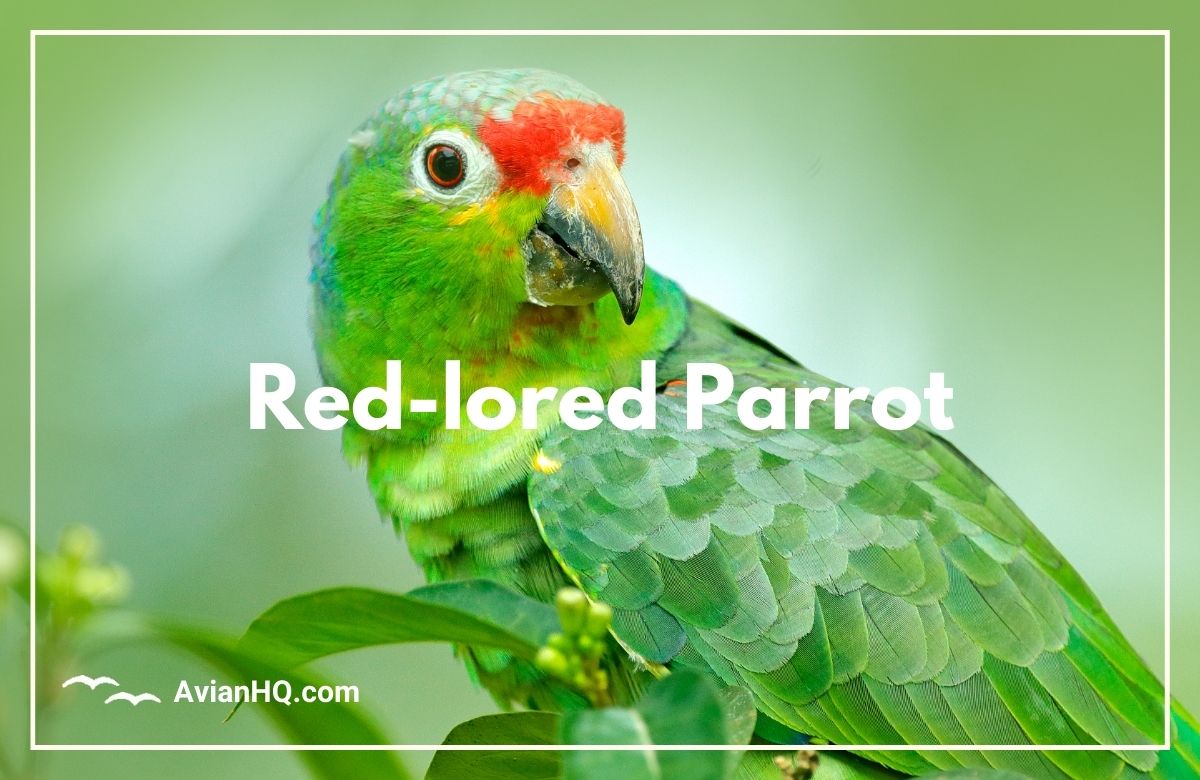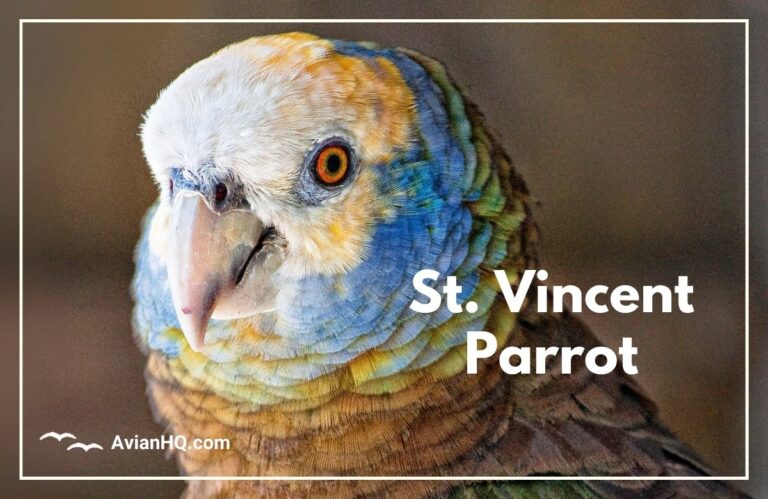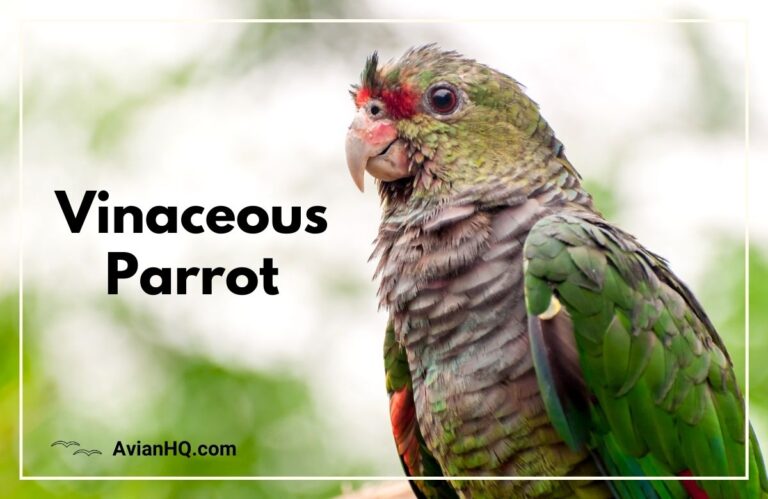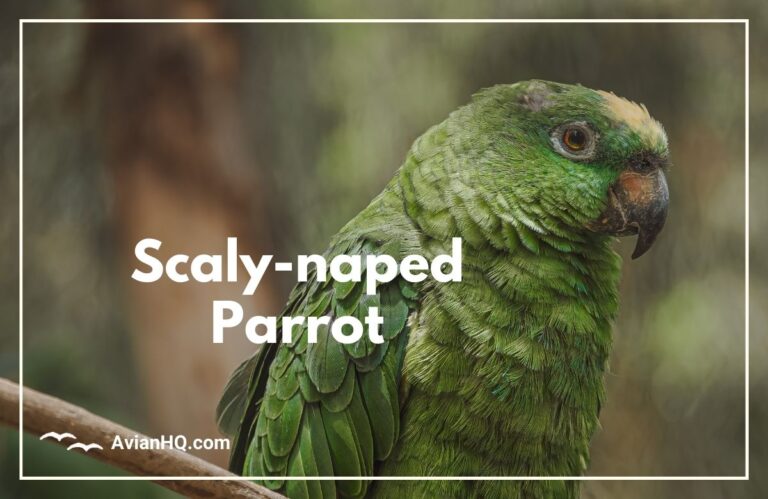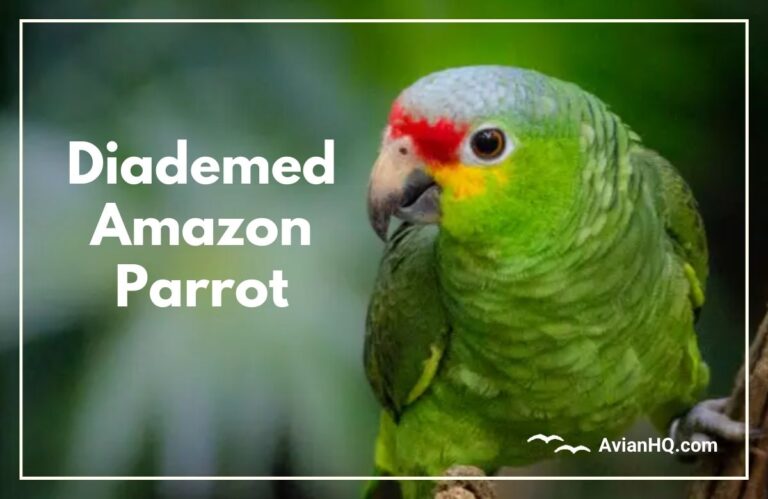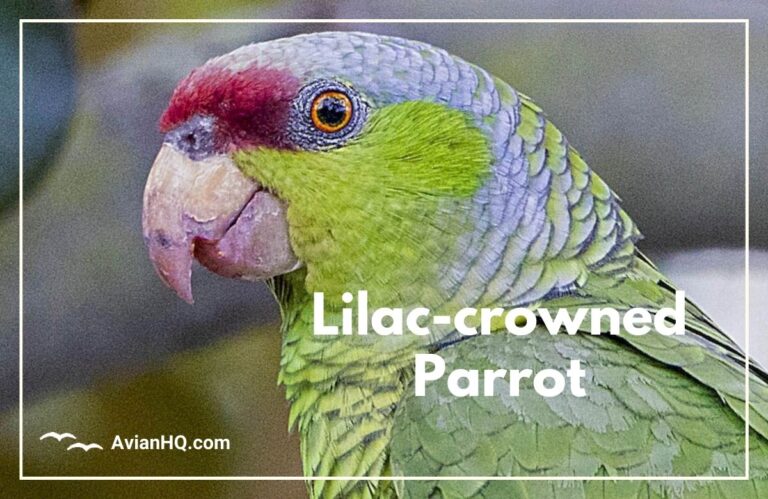Red-lored Parrot (Amazona autumnalis)
The brightly colored and highly intelligent Red-lored Amazon parrot makes a delightful pet bird that can live 80 years. With its charming personality, talent for talking, and affectionate nature, it’s no wonder this Amazon is one of the most popular parrots kept in households across North and South America.
Originating in Mexico and regions of Central and South America, Red-lored Amazons thrive in humid rainforests and woodlands. Weighing between 11 to 17 ounces (314 to 485 grams), these parrots grow to 12 to 14 inches (30 to 35 centimeters) long. Splashes of red, blue, green, and yellow give them a rainbow palette.
While Red-lored Amazons make delightful pets, they require daily interaction, toys to play with, and a large cage or play stand. Their loud vocalizations may not suit all living situations. However, folks willing to put in ample time to properly care for a Red-lored Amazon will discover a charming, funny, and interactive companion.
In the wild, Red-lored Amazons travel in noisy flocks, nest in tree hollows, and munch on seeds, nuts, fruits, and berries. Read on to learn more about this intriguing tropical parrot species.
History and Taxonomy
These beautiful, green parrots caught the attention of Swedish naturalist Carl Linnaeus back in 1758. He gave them the scientific name Amazona autumnalis.
Amazona pays homage to the warrior women tribes of South America that reminded early European explorers of the legendary Amazons of ancient Greece. Autumnalis refers to the red hues on the forehead and wings, reminiscent of the warm colors of autumn leaves.
Today, scientists recognize three distinct subspecies of Red-lored Amazons, each with its own geographic range:
- A. a. autumnalis inhabits eastern Mexico down to northern Nicaragua.
- A. a. salvini flies through northern Nicaragua down to Colombia and Venezuela. It’s slightly larger than other groups.
- A. a. lilacina sticks to humid forests on the western side of Ecuador. True to its name, this subtype has lilac-blue tones swirling through its head feathers.
Debates continue whether additional varieties should count as separate subspecies or even warrant their own species status, like the Diademed Amazon of Brazil. More field research can help settle these taxonomic questions.
Red-lored Amazons first arrived in the United States as cage birds imported from their native Mexico and Central America. Escaped pets established breeding populations in southern California nearly fifty years ago.
Physical Appearance
These stunning parrots live up to their names with vibrant red plumage blazing across their foreheads and scattered throughout their wings. The feathers on the crown shine an iridescent blue. Yellow cheek patches lend a pop of sunshine, especially on A. a. autumnalis and A. a. salvini.
Overall, Red-lored Amazons flaunt bright green feathers from crest to tail. White rings encircle their eyes. The horn-hued upper bill culminates in a sharp black tip with a fleshy cere at its base.
These stocky parrots measure approximately 12 to 14 inches (30 to 35 centimeters) from head to tail. Their wingspans reach up to 16 to 17 inches (40 to 43 centimeters) across. Weight ranges from 11 to 17 ounces (314 to 485 grams).
Males and females showcase identical plumage. The only visible differences occur in their eyes. Juveniles sport dark brown irises that lighten to golden orange or yellow as they mature.
The trio of subspecies vary slightly in size and vibrancy. Lilacine Amazons boast the most color with scales of blue and purple sprinkled through their crown feathers. Salvini Amazons flaunt hot red foreheads in contrast to their overall larger body size.
Habitat and Distribution
Ranging from Mexico down to Ecuador, Red-lored Amazons stick to humid forests and woodlands. They roost and nest in the canopies of tall trees.
Most wild populations soar through the rainforests of Mexico, Central America, Colombia, and Venezuela. Deforestation threatens their survival as logging and land development erodes their nesting grounds.
In their native habitat, Red-lored Amazons are absent from drier areas and higher mountain elevations above 3,600 feet (1,100 meters). Introduced flocks now thrive in cities and suburbs of southern California as well, including Los Angeles, San Diego, and Santa Barbara.
Red-lored Amazons congregate in noisy, gregarious flocks except during nesting season. Then pairs retreat to tree hollows to raise their young. Sometimes small family groups join the larger gatherings.
While adaptable to urban areas, this parrot truly thrives in lush, tropical forests rich in fruit and nut bearing trees. Conservation of these critical ecosystems can secure the future for these tropical parrots in the wild.
Diet and Feeding
As frugivores and granivores, Red-lored Amazons enjoy a diverse diet of seeds, nuts, fruits, berries, and vegetation. Their strong, hooked beaks efficiently crack open palm nuts and brazil nuts. Their dry tongues have adapted to manipulate and hull slippery seeds.
When foraging in the rainforest canopy, Red-lored Amazons grow unusually silent, quietly crunching on morsels discovered amid the leaves and vines. They use their sturdy claws and nimble beaks to peel back bark and excavate wood borer larvae.
In captivity, these energetic parrots thrive on a nutritious base of pellets and seed mix supplemented with ample vegetables, fruits, greens, and healthy starches like sprouted grains or whole grain pasta. Chopped sweet potato, red pepper, carrots, beans, corn, and peas offer variety and important nutrients. Leafy greens such as kale, arugula, parsley, cilantro, make up at least 20% of the diet.
Chopped nuts, seeds, berries, and fruits round out the menu a few times a week. Favorites include almonds, walnuts, sunflower seeds, blueberries, mango, melon, apple, orange.
Remove fresh foods after a few hours to discourage spoilage. Rinse food and water dishes daily.
Breeding and Reproduction
Red-lored Amazons form strong pair bonds and likely mate for life. In late winter through early spring, bonded pairs retreat to tree hollows to build a nest. The female typically lays 2 to 5 shiny white eggs.
Both parents take turns incubating the eggs for 26 to 32 days before they hatch. Once the helpless chicks emerge, the female broods them close to impart warmth while the male brings food. After their protective down dries out, the nestlings open their eyes at about 2 weeks old.
Around 60 days from hatching, the young fledge from the nest. They appear clumsy at first, hopping along branches and tentatively flapping their wings to build flight strength. Some juveniles remain with their parents through the next breeding season to learn survival skills.
In the wild, Red-lored Amazons may start reproducing around 3 to 4 years old. Captive birds can breed much earlier though, around 18 months to 2 years old. Careful measures should be taken with breeding pairs to ensure the health of both parents and chicks.
Behavior and Ecology
Gregarious and social, Red-lored Amazons chatter and bicker happily within large flocks in their native rainforest homes. Pairs preen each other’s bright plumage and may indulge in courtship feeding of choice morsels.
In captivity, these clever parrots bond closely with their owners, eager to perform tricks and show off their impressive vocabularies. Their loud vocalizations can be both delightful and exasperating. Expect plenty of squawks interspersed with snippets of song and recognizable words or phrases.
Playtime is a must for these energetic, acrobatic parrots. Sturdy wood toys, ropes, ladders, and swings satisfy their desire to climb and chew. Rotate new toys regularly to ward off boredom and prevent over-preening of feathers.
Red-lored Amazons in the wild spend nearly all daylight hours actively foraging, socializing, preening, or traveling to new feeding grounds. In tune with their intrinsic flocking behavior, a companion bird of another species can be a consideration for pet Amazons when their owner is away.
As the sun sets, flocks settle down together to roost for the night, safely concealed by the rainforest canopy. Before dozing off, the birds chatter softly and preen until ready to tuck their beaks into their back feathers to sleep.
Conservation Status
Though currently listed as Least Concern by the International Union for Conservation of Nature (IUCN), threats loom over wild Red-lored Amazon populations. Their penchant for farmland feeding grounds and timber plantations often brings them into deadly conflict with humans.
Between habitat destruction felling critical nesting trees and trapping for the pet trade, numbers have dwindled to under 10,000 mature birds. Deforestation hits breeding and foraging areas the hardest across Mexico, Central and South America.
In Ecuador, the Lilacine Amazon’s striking purple-tinged plumage demands top dollar, fueling risky poaching ventures into protected cloud forests. Enforcement of illegal trading remains lax.
Concerted conservation campaigns can pull vulnerable groups back from the brink. Bolstering law enforcement, implementing flock monitoring programs, educating local communities, and supporting sustainable agriculture and logging practices all contribute to preserving precious biodiversity.
Through attentive protection policies and Habitat preserves, this tropical treasure still has hope to continue brightening rainforest canopies for generations to come. The irresistible red on their foreheads reminds us that caring about the world’s rare creatures matters.
Cultural Significance
The Red-lored Amazon’s stunning feathers and engaging personality have captivated people for centuries. As one of the most common parrots in the pet trade, they make charming companions when properly trained and cared for.
Among indigenous tribes across the neotropics, the colorful plumage plays a prominent role in traditional dances, regalia, and spiritual rituals. Legends may feature feathered deities and animal guides modeled after these parrots. Local names highlight the crimson patch above their beaks, like “frente roja” in Spanish.
Perhaps no one was more enchanted by these green parrots than the lonely sailor far from home. Red-lored Amazons were likely first exported from port cities in Mexico and Panama to Europe by Spanish galleons in the 1600s. Now pet owners worldwide welcome them into households to brighten up their days.
From Pablo Neruda’s poetry praising their wild nature to 5-star online reviews gushing over their talking skills, the Red-lored Amazon captivates people across cultures with charismatic charm. As flagship species for threatened rainforests, their recognizable red logo boosts campaigns to expand conservation areas across Latin America. Saving their wild populations ensures future generations can continue admiring these special parrots.
Conclusion
For bird enthusiasts seeking an affectionate, long-lived pet, the Red-lored Amazon parrot makes a delightful companion when properly trained and cared for. Their impressive talking skills and playful personalities entertain owners for decades. Vibrant feathers belie the species’ alarming decline across its native Latin America habitat.
Growing under 10 inches (25 cm) long, these charismatic parrots thrive in humid rainforests from Mexico down to Ecuador. Brilliant patches of crimson, azure, emerald, and sunbeam yellow decorate their plumage. Gregarious flocks fill the canopy with noisy social antics until pairs retreat during breeding season.
Once ubiquitous in Central American ports, trapping wild Red-lored Amazons for the caged bird trade decimated populations. Habitat loss to logging and agriculture erodes critical nesting sites. Under 10,000 adults likely persist in the wild.
Pet owners worldwide cherish Red-lored Amazons. Yet preserving beloved species requires protecting vanishing forests that sustain them. Expanding conservation areas through Latin America offers hope against extinction for these vulnerable parrots in their natural forest homes.
So consider adopting a captive bred Red-lored Amazon in need of a home. But also speak up for endangered wild flocks before their sentinel red foreheads fade from rainforest canopies forever. Our world grows more colorful with their raucous fellowship ringing through the trees.

